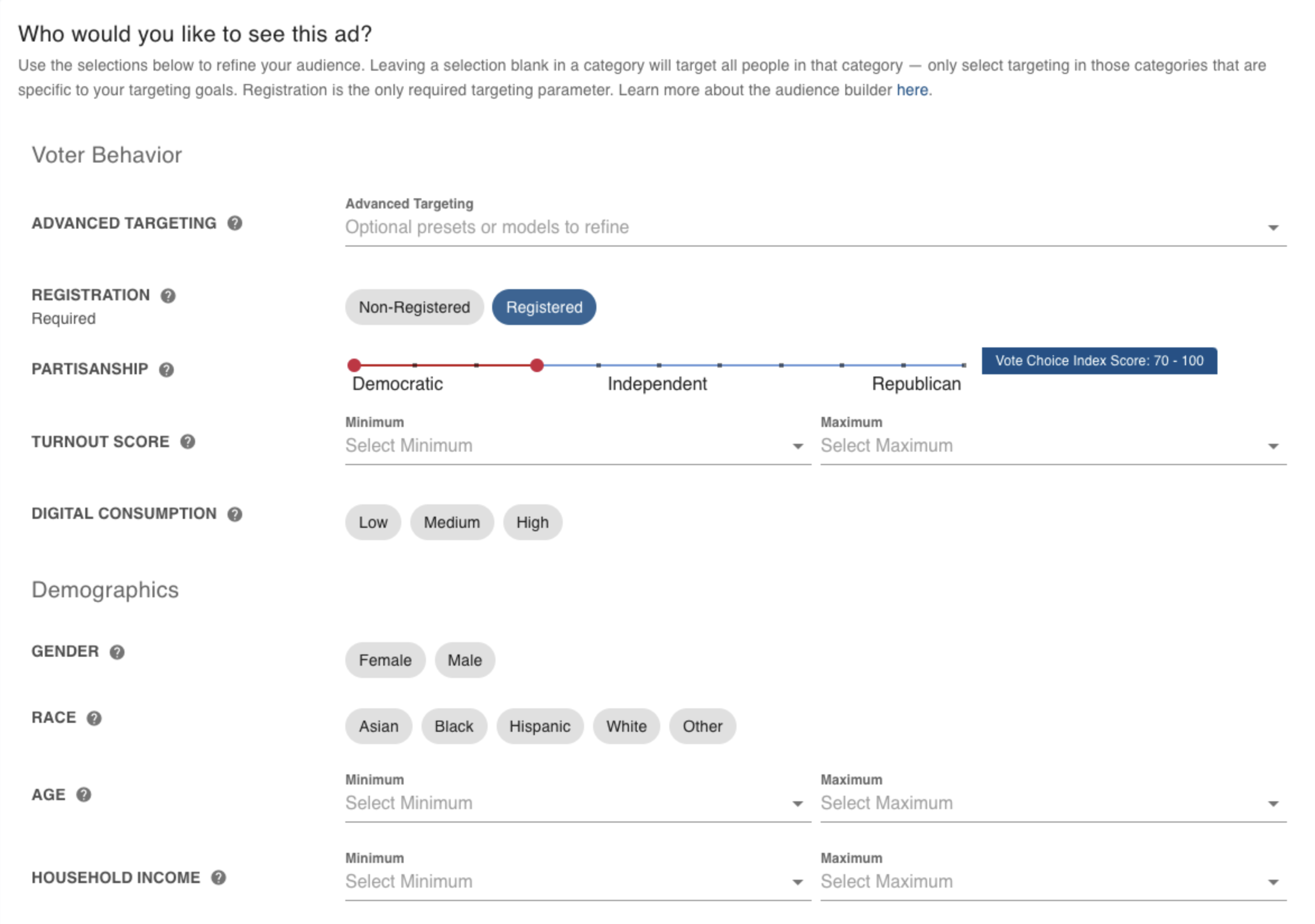DSPolitical is proud to announce the launch of our updated Audience Builder, now available on Deploy by DSPolitical. This game-changing new feature gives campaigns and consultants the power to create hyper-targeted audiences and find the exact voters they need to win elections.
With a baseline of 16 Catalist pre-sets, additional data points can be layered to create granular audiences, including registration, vote propensity, age, race, gender, digital consumption, and more.
How the Audience Builder works
We provide pre-built political geographies from state-wide and congressional districts to state house and custom zip code-level targeting.
In Audience Builder, you start by selecting from one of the 16 baseline Catalist models that range from issue-specific (Choice-Supporting, Gun Control Supporting, Environmental Activist) or method-based (GOTV, Persuasion) universes. Or start from a blank slate!
Once your base audience is set, you are ready to start customizing. Audience Builder gives you the power to build the right audience for your campaigns. Take a look at the data points below:

With just a few clicks, you can layer combinations of data points to build your exact audience of target voters.
Strategies and Best Practices
The power to build sophisticated, hyper-targeted audiences allow campaigns to maximize their digital budgets, determine which voters they should reach on which mediums, and run more tailored creative.
Here are some ways to make the most of the new tools in Audience Builder:
Digital Consumption: This filter looks at voters’ media habits and determines what platforms they rely on for news. Selecting a “high” digital consumption score means you’re refining the targeting to voters who are most likely to consume news via social media or other online platforms. These voters are also most likely to change their behavior based on digital advertising and least likely to be reached with traditional paid media like television or direct mail.
Partisanship: Partisanship indicates the probability that an individual supports the Democratic candidate in a typical two-party competitive election. A higher score means the voter will vote Democratic more reliably. Partisanship categories are built using Catalist’s Vote Choice Index (VCI) scores which are better predictors of actual voting behavior than traditional partisanship models.
Turnout: Turnout scores are based on Catalist’s vote propensity scores, which indicate a voter’s likelihood to turn out and vote in elections. A higher score means the voter is more likely to vote in an election. When running GOTV campaigns, voters in the middle of the turnout spectrum are prime targets for social pressure creative!
These are just a few ways your campaign can build its ideal audience of voters and win. Ready to see Audience Builder in action?